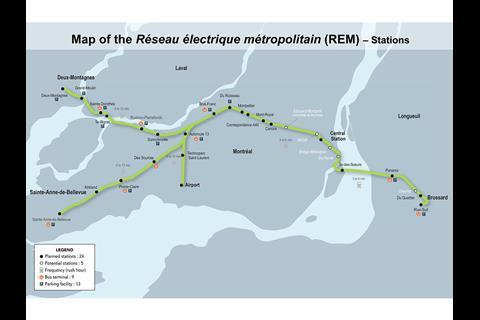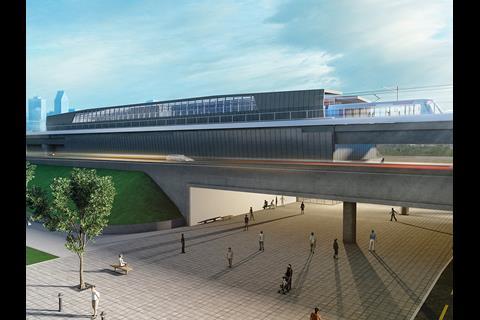CANADA: Proposals for the development of a 67 km automated metro eparate from the existing metro in Montréal have been unveiled by CDPQ Infra, a subsidiary of public pension and insurance investor Caisse de dépôt et placement du Québec that was established last year to study infrastructure projects suggested by the provincial government.
CDPQ Infra said the 67 route-km double-track Réseau électrique métropolitain would be the third-largest automated network in the world, after Dubai’s 80 km metro and Vancouver’s 68 km system.
Starting from the South Shore, the REM would use the new Champlain Bridge to reach the city centre. It would then run through the exisiting Mont Royal tunnel which would be converted to LRT standards. Three branches would run to the airport, Sainte-Anne-de-Bellevue on the West Island and Deux-Montagnes on the North Shore.
At-grade, tunnel and elevated alignments would be used. CDPQ Infra has selected the Highway 40 route to the West Island as its preferred option, as this would provide a dedicated corridor without the need to share tracks with freight trains.
There would be 24 fully-accessible and climate-controlled covered stations, with options for a further five stops. There would be a fleet of around 200 cars, each with a capacity of 150 passengers, running as two-car sets off-peak and four-car sets in the peaks. Services would run every six to 12 min from 05.00 to 01.00 seven days a week.
The cost of the project is estimated at C$5·5bn, with La Caisse willing to commit C$3bn subject to the participation of the provincial and federal governments. It is envisaged that construction could begin in spring 2017, with the first trains in service towards the end of 2020.
‘Today we are proposing an innovative public transit solution that will improve the quality of life in Montréal and deliver important economic, social and environmental benefits’, said Michael Sabia, President & CEO of La Caisse, on April 22. ‘The new transit system will also deliver long-term, stable investment returns very well aligned with the needs of our depositors, the people of Québec. As such, this project is perfectly in line with our overall strategy and with our approach to investing in Québec – focused as it is on the development of high-impact, commercially sound projects. Every time passengers use their new transit system, they will be helping to secure their future retirement.’





